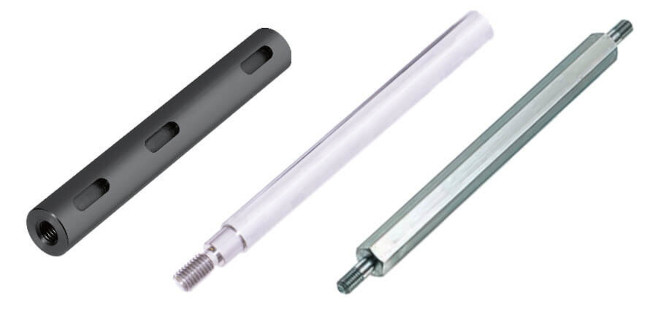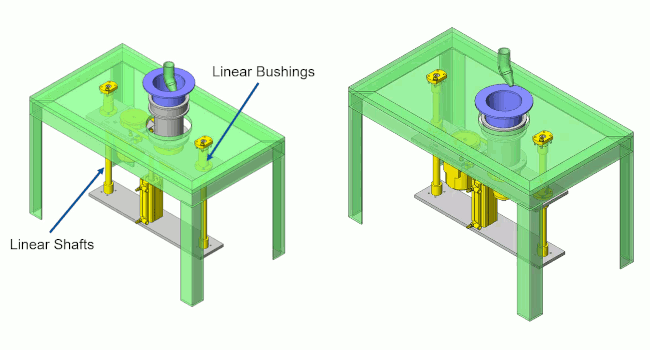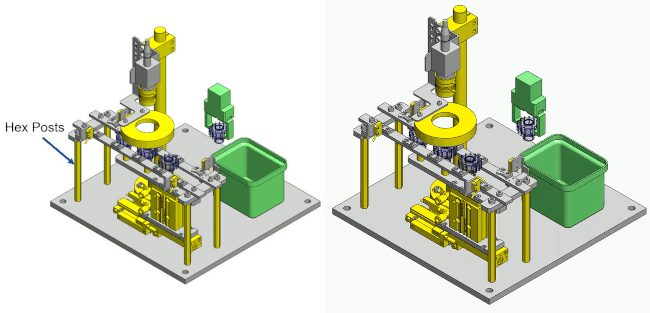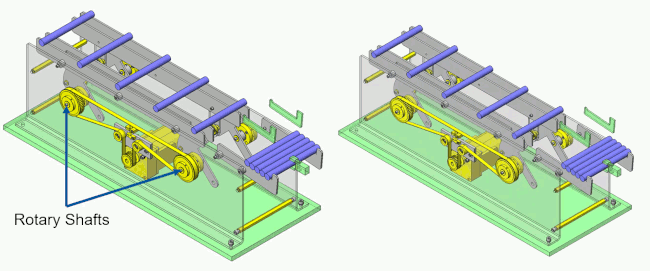
How to Choose Between Linear Shafts, Posts and Rotary Shafts
Mike McLeod
Automation Motion Control Machine Building noads
Sponsored by Misumi
What the key differences are with these terms and which applications you should use them in.
 You may have heard the terms “linear shaft”, “post”, and “rotary shaft” before, but what are the differences between these terms, and which applications should you use them in? Don’t worry, we’re here to help!
You may have heard the terms “linear shaft”, “post”, and “rotary shaft” before, but what are the differences between these terms, and which applications should you use them in? Don’t worry, we’re here to help!
Linear shafts, posts, and rotary shafts are used when you need to control some type of motion, either linear or rotary, or a combination of the two. Before we dive into the motion aspects, let’s take a look at how each option works.

Linear shafts: The term “linear shaft” can be a little misleading, as the shaft isn’t actually doing any work – it’s just there for support. A linear shaft is used when a sliding motion is needed, especially when that motion needs to be guided and fine-tuned. The loads and requirements of the motion dictate the shaft size and precision. The example, above shows the actuator doing the work of lifting the load and the linear shafts and bushings supporting. Feel free to reference our previous post on Sliding Guides for more information.

Posts: A post or strut post is exactly what it sounds like – a cylindrical bar that is attached on one end to a base, and has something that rotates around it. Posts (commonly known as standoffs) are used to position components in machine designs or assemblies. They can also be used to separate or connect other components and can be found in round, hex, and square shapes. The example shows hex posts being used in the assembly.

Rotary shafts: In the example above, the shaft is doing the work by turning and transmitting power. The shaft can act alone, such as the drive shaft of an automobile, or along with a system of pulleys and belts or chains, such as the pedal on a bicycle. Here, shaft sizing is determined by the amount of power that needs to be transmitted.
Choosing the Best Option (Defining Your Motion)
Now that we’ve covered the basics of each option, how do you choose between the three? Quite simply, the answer lies in determining the type of motion that you have in your application. Any kind of sliding or translating motion requires a linear shaft.
However, if you need to transmit power over a distance, or if you need to adjust the relative speed of some rotation (see our article on Sizing Timing Belts and Pulleys), a rotary shaft is your answer. Finally, if you need to have a rotary motion that is fixed around a particular spot, such as an idler pulley, the simple post is a great solution.
As with a lot of engineering problems, identifying the type of motion is the most critical aspect of the design. Once you have that knowledge, choosing between linear shafts, posts, and rotary shafts is quite easy.
MISUMI linear shafts, circular and hex posts are now being manufactured in our new location in Ohio. Also, be sure to check out the new expanded configurable dimensions and alterations of MISUMI automation components including linear shafts, rotary shafts, and posts here.
https://us.misumi-ec.com
